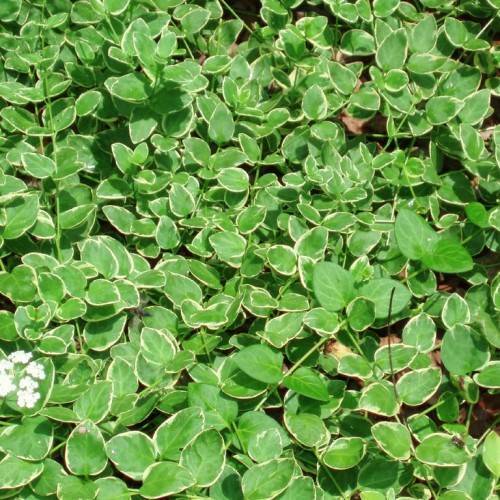
wintercreeper
Euonymus fortunei 'Variegatus'
Cycle:
Herbaceous Perennial
Watering:
Average
Hardiness Zone:
5 - 9
Flowers:
Flowers In Summer
Sun:
Full sun,part shade
Leaf:
Yes
Growth Rate:
Low
Maintenance:
Low
Drought Tolerant:
Yes
Invasive:
Yes
Care Level:
Moderate
watering
WaterWintercreeper (Euonymus fortunei 'Variegatus') once or twice per week, depending on weather conditions. Water whenever the top 1-2 inches of soil feels dry to the touch. During especially hot and dry weather, you may need to water more frequently. In winter, water less often and allow the top 2-3 inches of the soil to dry out between watering. Avoid overwatering, which can lead to root rot, and provide plenty of drainage.
sunlight
Wintercreeper (Euonymus fortunei 'Variegatus') is a fast-growing evergreen shrub, which prefers light to partial shade. It should not be exposed to full sun for prolonged periods of time, as the foliage might be burnt. However, providing it with a few hours of direct sunlight every day will promote good growth and color development. Ideally, the wintercreeper should receive 4-6 hours of direct sunlight daily. This could be during the morning or afternoon, or ideally both. Sunlight helps the plant thrive and encourages brighter foliage and blooms. On especially hot days, avoid direct afternoon sunlight, as this could cause sunburn.
pruning
Wintercreeper (Euonymus fortunei 'Variegatus') typically needs pruning once a year in the late winter or early spring before new growth appears. Pruning should involve removing any dead, damaged, or diseased branches, as well as thinning out tight or overcrowded areas. This will give the plant a more attractive appearance and help keep it healthy. Depending on the size and shape of the plant, you may need to prune it lightly or more extensively. It is important to avoid overly aggressive pruning, though, as this can stunt the plant's growth or inhibit flowering.
